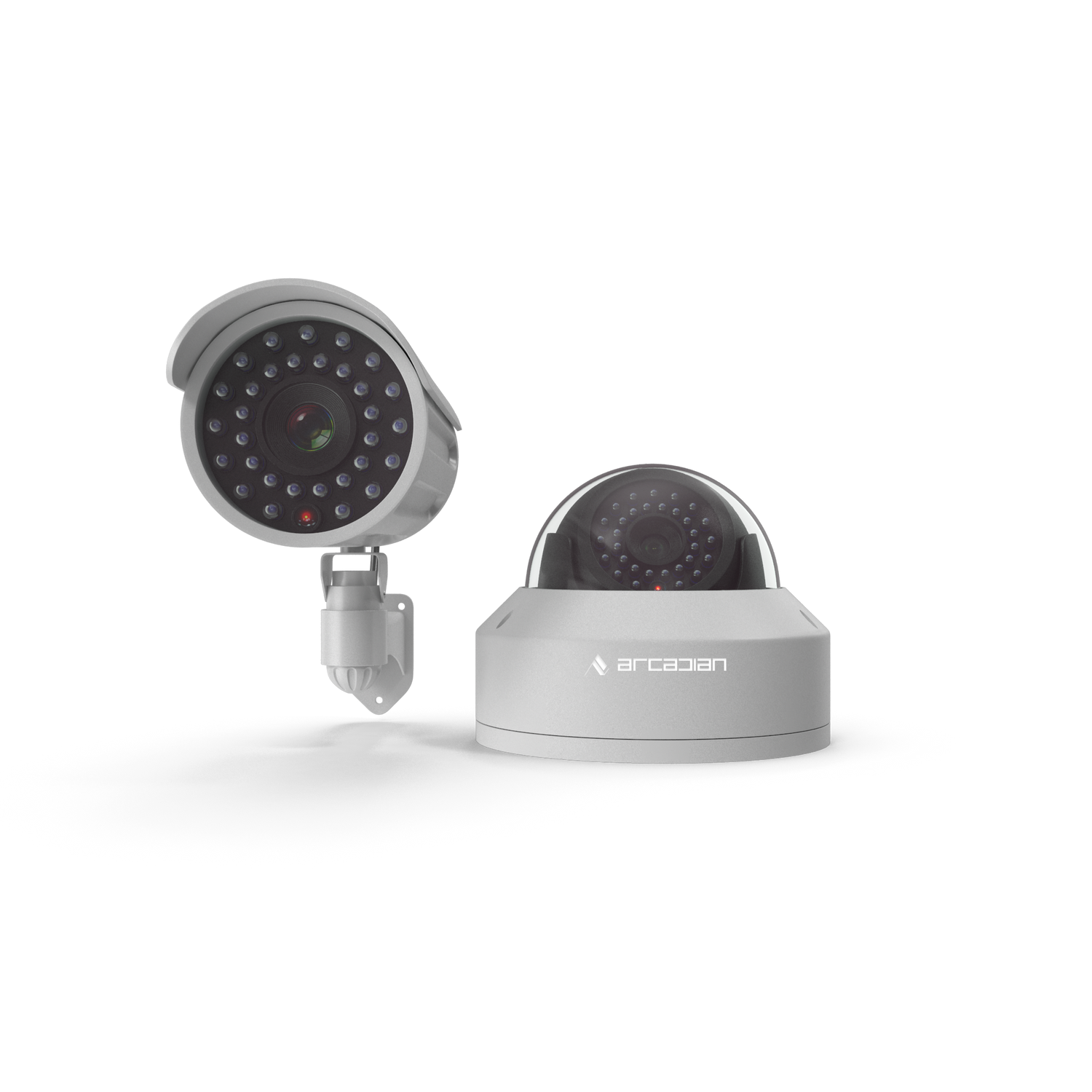How to Ensure Data Security in Distributed Video Surveillance Networks
How to Ensure Data Security in Distributed Video Surveillance Networks As more businesses shift to managing distributed video surveillance networks across multiple locations, ensuring data security has become a critical concern. The increasing reliance on cloud-based solutions and AI-driven video analytics offers incredible advantages in terms of flexibility and scalability,...

How to Ensure Data Security in Distributed Video Surveillance Networks
As more businesses shift to managing distributed video surveillance networks across multiple locations, ensuring data security has become a critical concern. The increasing reliance on cloud-based solutions and AI-driven video analytics offers incredible advantages in terms of flexibility and scalability, but it also introduces potential vulnerabilities when it comes to protecting sensitive surveillance data.
From cybersecurity threats to data breaches, the risks of unsecured video surveillance systems can have far-reaching consequences. In this blog, we’ll explore the key steps businesses can take to ensure data security in distributed video surveillance networks, safeguarding your systems and ensuring compliance with privacy regulations.
Why Data Security in Video Surveillance is Crucial
Video surveillance systems are designed to capture and store real-time footage of critical areas in your business, from customer interactions to valuable inventory and even restricted access zones. With this sensitive information being constantly recorded, ensuring its protection is paramount.
Data breaches can lead to the exposure of personal information, financial loss, and legal consequences—particularly if your business operates in industries that are subject to data protection regulations such as GDPR or HIPAA. Furthermore, compromised video footage can be used by malicious actors to gain insight into security weaknesses, putting your business at even greater risk.
1. Use End-to-End Encryption
One of the most effective ways to protect data in distributed video surveillance networks is to implement end-to-end encryption. Encryption ensures that the video data captured by your cameras is securely transmitted and stored without being accessible to unauthorized parties.
With end-to-end encryption, video footage is encrypted at the point of capture and remains protected as it’s transmitted to the cloud or other storage solutions. Only authorized personnel with the appropriate decryption keys can access and view the footage. This prevents man-in-the-middle attacks, where hackers could potentially intercept unencrypted data during transmission.
When choosing a video surveillance system, make sure that it provides robust encryption protocols for both data in transit and at rest. For instance, Arcadian.ai uses military-grade encryption to ensure that all footage is securely stored and accessible only by authorized users.
Best Practices for Encryption:
- Ensure that AES-256 encryption is implemented for both video streams and stored data.
- Use TLS/SSL encryption for data in transit to secure video transmission between cameras and the cloud.
- Regularly update encryption protocols and software to stay ahead of emerging threats.
2. Implement Strong Access Controls
Another crucial aspect of ensuring data security in distributed video surveillance networks is the implementation of strong access controls. These controls limit access to your video footage, ensuring that only authorized personnel can view, manage, or share sensitive data.
Role-based access control (RBAC) is a key feature that allows businesses to assign specific roles to employees and restrict their access based on their responsibilities. For example, a security guard might have access to live feeds but be restricted from downloading footage, while a system administrator could have full access to both live and recorded footage for all locations.
By defining clear roles and responsibilities, businesses can minimize the risk of internal data breaches or unauthorized access to sensitive footage.
Best Practices for Access Control:
- Use multi-factor authentication (MFA) to verify user identity when accessing video surveillance systems.
- Implement role-based access control to limit access to specific users based on their roles within the company.
- Monitor and log all user activity to ensure that any unauthorized access attempts can be tracked and addressed promptly.
3. Ensure Regular Security Audits and Penetration Testing
Even with the best data security measures in place, it’s important to conduct regular security audits and penetration tests to identify potential vulnerabilities in your video surveillance system. A security audit involves a comprehensive review of your system’s security protocols, user access logs, and overall data protection policies.
Penetration testing, on the other hand, simulates cyberattacks to test your system’s defenses and identify weak points that could be exploited by hackers. By conducting these tests regularly, businesses can stay ahead of potential threats and ensure that their systems remain secure over time.
Best Practices for Security Audits:
- Schedule regular security audits to review encryption protocols, access controls, and user activity logs.
- Perform penetration testing to simulate cyberattacks and identify vulnerabilities before they can be exploited.
- Update security policies and protocols based on audit findings to address any gaps in protection.
4. Choose a Secure Cloud-Based Solution
For businesses operating across multiple locations, adopting a cloud-based video surveillance system can simplify management and data storage. However, it’s essential to choose a cloud solution that prioritizes security and data privacy.
When selecting a cloud-based system, ensure that the provider offers secure data centers, redundant storage, and regular backups to prevent data loss in case of a breach. Look for platforms like Arcadian.ai that provide multi-region cloud storage, ensuring your footage is securely stored in multiple locations to prevent loss from local outages or breaches.
Best Practices for Cloud Security:
- Verify that your cloud provider uses ISO-certified data centers with stringent security protocols.
- Ensure the platform offers redundant storage and regular backups to protect against data loss.
- Look for cloud providers that offer end-to-end encryption for all stored and transmitted data.
5. Comply with Data Protection Regulations
Depending on your industry and geographic location, your business may be subject to data protection regulations such as the General Data Protection Regulation (GDPR) or the Health Insurance Portability and Accountability Act (HIPAA). These regulations require businesses to follow strict protocols when capturing, storing, and sharing video footage, especially when it includes personally identifiable information (PII).
To ensure compliance, businesses must understand the specific regulations that apply to them and implement the necessary measures to meet legal requirements. This includes ensuring that video data is securely encrypted, only authorized personnel have access, and footage is stored for the appropriate duration as required by law.
Failure to comply with these regulations can result in significant fines and legal consequences, making compliance a critical aspect of data security.
Best Practices for Compliance:
- Familiarize yourself with GDPR, HIPAA, and other relevant data protection regulations that apply to your industry.
- Implement privacy by design principles when setting up your surveillance system, ensuring that data protection is built into every aspect of your network.
- Conduct regular compliance audits to ensure that your system meets the latest legal requirements.
6. Monitor and Log All Activity
To maintain the integrity of your video surveillance system, it’s essential to implement continuous monitoring and logging of all activity. This ensures that you can track user access, detect unusual behavior, and identify potential security incidents in real time.
Monitoring tools can help you detect suspicious activity, such as unauthorized logins or attempts to access restricted footage. By keeping a comprehensive log of all user activity, businesses can quickly investigate and address any potential security breaches.
Best Practices for Monitoring and Logging:
- Implement continuous monitoring tools to track all system activity and detect potential security threats.
- Keep detailed logs of user access, footage downloads, and any attempts to modify system settings.
- Regularly review logs to identify patterns of unusual activity or potential breaches.
Why Arcadian.ai is the Best Choice for Secure Video Surveillance
Arcadian.ai offers a cloud-based video surveillance platform designed to prioritize data security across distributed networks. With end-to-end encryption, role-based access control, and multi-factor authentication, Arcadian.ai ensures that your video footage remains secure at all times.
Key Features of Arcadian.ai:
- End-to-End Encryption: Protect your video data from capture to storage with military-grade encryption, ensuring that only authorized personnel can access footage.
- Cloud-Based Storage: Securely store all footage in ISO-certified data centers with redundant storage to prevent data loss.
- Advanced Access Controls: Limit access to video feeds based on user roles, ensuring that only authorized personnel can view or download sensitive footage.
- Comprehensive Monitoring and Logging: Track all system activity and user access to detect any suspicious behavior and maintain full control over your security system.
Sarah’s Story: How Arcadian.ai Secured a Nationwide Surveillance Network
Sarah manages security for a chain of financial institutions spread across several states. With multiple locations and highly sensitive video footage, ensuring data security was one of her top priorities. After implementing Arcadian.ai, Sarah was able to centralize her surveillance network while maintaining full control over who could access the footage.
With end-to-end encryption and role-based access controls, Sarah ensured that her team adhered to compliance regulations while preventing any unauthorized access to sensitive data. The comprehensive monitoring tools provided by Arcadian.ai allowed her to track all system activity, ensuring that any potential security threats were detected early and addressed immediately.
Looking for a secure, cloud-based video surveillance solution that prioritizes data protection? Discover how Arcadian.ai can help you secure your distributed video surveillance network and ensure compliance with data protection regulations. Schedule a demo today.

Security is like insurance—until you need it, you don’t think about it.
But when something goes wrong? Break-ins, theft, liability claims—suddenly, it’s all you think about.
ArcadianAI upgrades your security to the AI era—no new hardware, no sky-high costs, just smart protection that works.
→ Stop security incidents before they happen
→ Cut security costs without cutting corners
→ Run your business without the worry
Because the best security isn’t reactive—it’s proactive.







